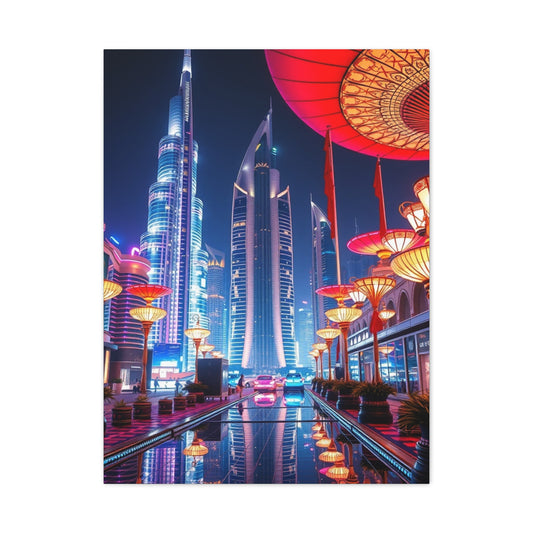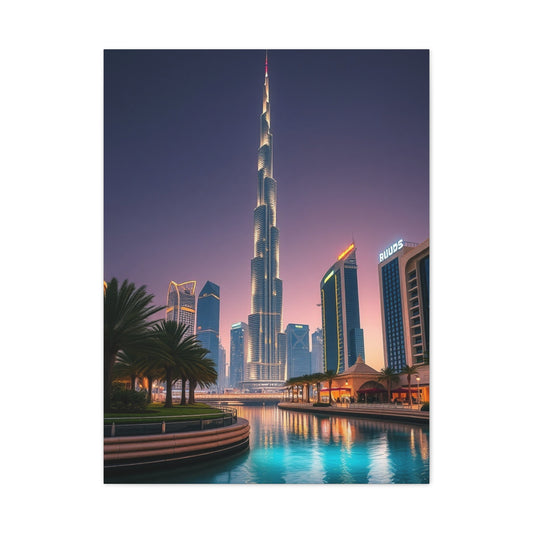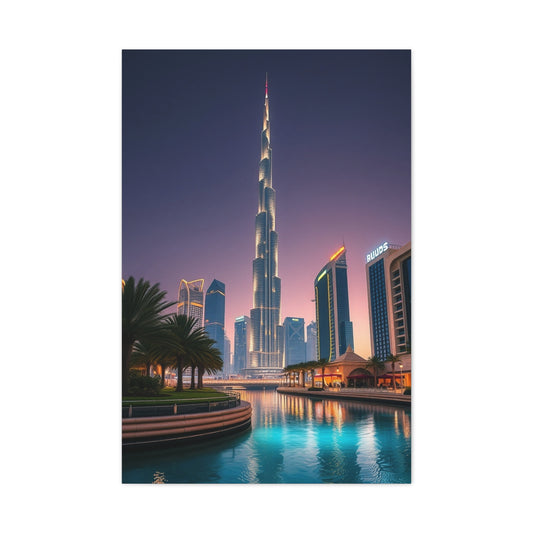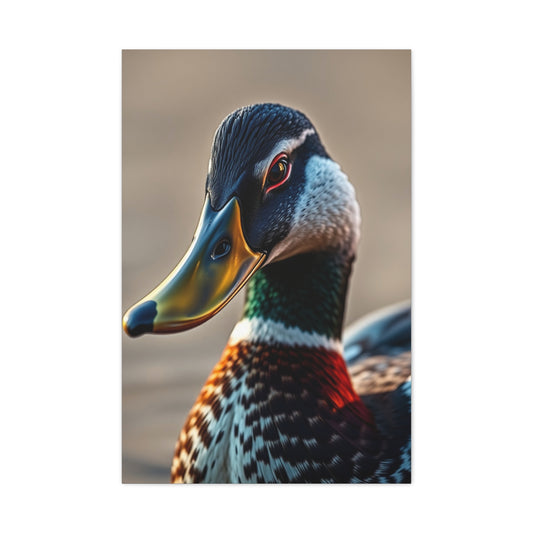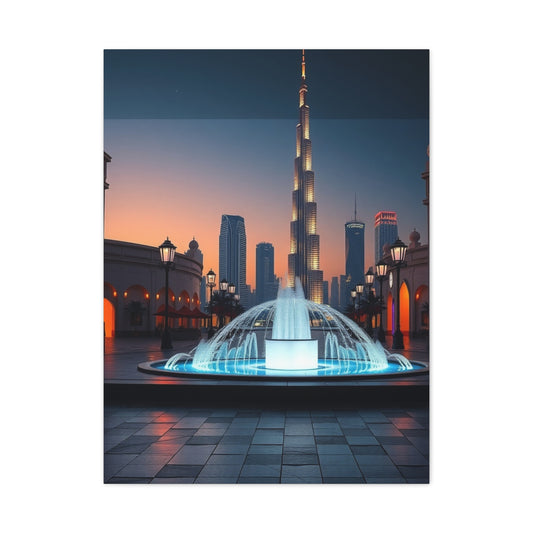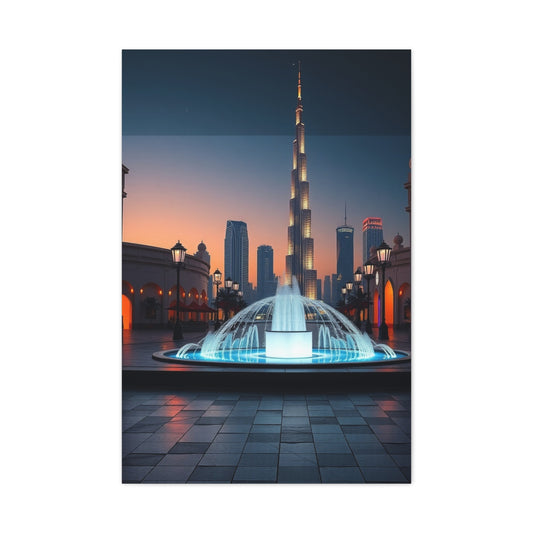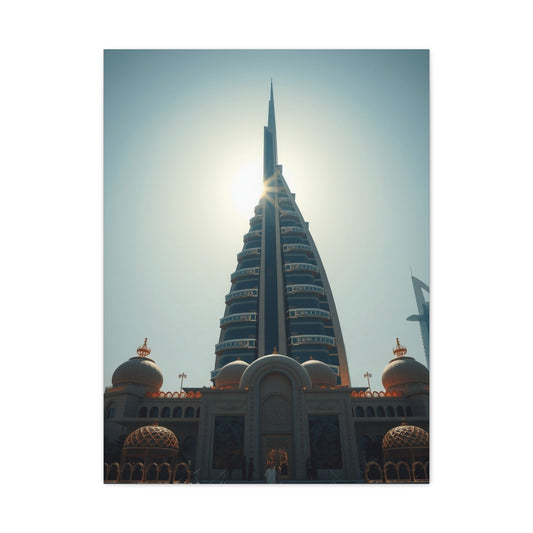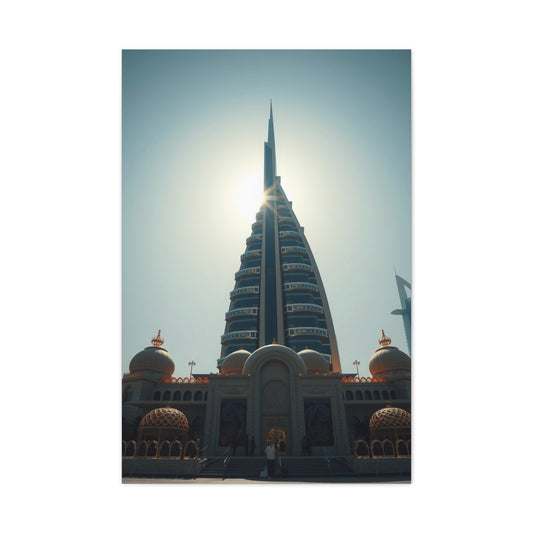Photography focused on bands is a vibrant and specialized area within music photography. As a photographer, your role is to capture the band’s essence and make them look effortlessly cool. This genre isn’t ideal for novices; it demands a solid understanding of your gear and camera settings. Use these 12 expert tips to elevate your band photography and create unforgettable images.
1. Connect with the Band Before Shooting
The cornerstone of producing compelling and memorable promotional band photography is establishing a genuine, meaningful connection with the band before you even raise your camera. This foundational step sets the tone for the entire project, enabling you to move beyond surface-level snapshots and instead capture the true spirit, energy, and essence of the musicians. Taking the time to immerse yourself in the band’s musical style, personalities, and group dynamics allows you to intuitively understand how they want to be represented visually and ensures your images resonate authentically with both the band and their audience.
A crucial part of this process involves attending the band’s rehearsals or live performances. Observing how each member moves, interacts, and communicates onstage offers invaluable insights. Pay close attention to the subtleties: the lead vocalist’s gestures, the guitarist’s expressions during solos, the rhythm section’s syncopated movements, and even the quiet moments between songs. These observations help you anticipate pivotal moments worth capturing, enabling you to prepare mentally and technically for shots that tell a vivid story. Recognizing the roles within the group—whether it’s the charismatic frontperson, the enigmatic bassist, or the steady drummer—helps you tailor your photographic approach to highlight each member’s unique presence and contribution.
Beyond the technical and performance aspects, delving into the band’s inspirations, influences, and backstory enriches your creative palette. Understanding who or what shaped their sound, their lyrical themes, and their emotional landscape informs how you frame and style the shoot. Are they inspired by classic rock legends with a rebellious edge? Do they blend genres with an avant-garde flair? Or do they embody the soulful storytelling traditions of blues and folk? Capturing the mood and aura that the band wants to project requires empathy and insight into these artistic roots. This connection allows your photographs to transcend mere documentation and become visual extensions of the band’s musical identity.
Building rapport also means fostering a comfortable and trusting environment where band members feel relaxed and confident. Musicians are performers accustomed to engaging audiences, yet the vulnerability of being photographed is distinct from live performance. Some may be camera shy or unsure how to translate their stage energy into still images. Spending informal time with the band before the shoot—chatting about music, their experiences, or shared interests—helps break down barriers. This rapport encourages more spontaneous, natural expressions during the session, resulting in photos that convey genuine emotion rather than forced poses.
Incorporating this level of preparation elevates your work beyond generic promotional shots. Instead of mimicking well-worn clichés or simply copying iconic band photography styles, you create unique, personalized visuals that reflect the band’s true character. This authenticity resonates more deeply with fans and industry professionals alike, positioning the band memorably in a saturated market. Authenticity becomes a visual narrative thread that connects the band’s sound to their image, reinforcing their brand and enhancing audience engagement.
|
Related Catagories: |
Additionally, understanding the band’s group chemistry is essential. Bands often have unspoken dynamics—who’s the leader, the jokester, the quiet thinker. These relationships influence how you compose group shots and direct interactions. Capturing candid moments of camaraderie, playful exchanges, or intense focus showcases the human side of the musicians and adds depth to the imagery. This attention to group dynamics can transform standard portraits into storytelling photographs that hint at the band’s history and personality.
From a logistical standpoint, early connection also facilitates smoother collaboration on practical aspects like scheduling, location choices, and styling. When the band feels heard and understood, they’re more likely to share ideas openly and trust your expertise. This collaborative spirit enriches the creative process, resulting in a photoshoot that feels more like a joint artistic endeavor rather than a transactional task. Bands who feel invested in the process often bring higher energy and enthusiasm to the shoot, which is palpable in the resulting images.
In summary, investing the time and effort to connect with the band before the shoot is not just a courtesy—it’s a strategic and artistic imperative that shapes the quality and authenticity of your photography. It transforms your role from a technician capturing faces to a storyteller weaving visual narratives that amplify the band’s voice. By immersing yourself in their music, observing their interactions, understanding their influences, and fostering trust, you lay the groundwork for images that are evocative, dynamic, and uniquely theirs. This comprehensive approach enhances your reputation as a music photographer who delivers not just pictures, but compelling visual legacies.
2. Understand the Purpose of the Photos
Understanding the ultimate purpose of the photographs is a fundamental step that profoundly influences every decision you make during a band photography session, from creative direction to technical execution. Before you even lift your camera, clarifying how the images will be used is essential because this knowledge allows you to tailor your shooting style, equipment choices, and post-processing techniques to meet specific goals and ensure maximum impact. Whether the images will promote an upcoming tour, serve as album artwork, enhance social media presence, or be used in press kits, each platform demands distinct visual treatments, technical specifications, and compositional strategies.
If the photos are intended to promote a tour, you’ll want to capture the band’s energy, charisma, and stage presence in a way that conveys excitement and anticipation. These images need to be versatile enough to work in posters, flyers, online ads, and physical merchandise. This often calls for a dynamic mix of live performance shots and posed promotional portraits, with lighting and mood that evoke the genre and tone of the band’s music. The lighting may be dramatic, with high contrast and vibrant colors that reflect the intensity of live shows, or it could be more subdued and atmospheric for genres like indie or folk.
In contrast, album artwork requires a more deliberate and often conceptual approach. These images must encapsulate the theme, story, or emotions of the album while standing out visually in physical or digital marketplaces. Album covers are often viewed at a small scale on streaming platforms or as physical prints, so the composition must be strong and impactful, with a clear focal point that catches the eye instantly. You may need to employ creative lighting, props, or even staged scenes to tell a compelling story. The resolution and file quality must be impeccable because album artwork is printed in high fidelity, often on vinyl covers or large posters.
When photos are destined for social media channels, the strategy shifts toward immediacy, relatability, and shareability. Social platforms favor images that grab attention quickly, often through bright colors, expressive faces, or candid moments that convey authenticity. You might prioritize natural lighting and spontaneous poses to foster a sense of intimacy and connection with fans. Since social media photos are frequently viewed on small screens, clarity and visual punch are crucial. Aspect ratios also matter; vertical or square crops often perform better on platforms like Instagram and TikTok, so you should plan your framing accordingly.
Press kits and promotional materials for the music industry require a polished, professional look. These images should present the band in their best light, showcasing their brand identity clearly and succinctly. Editorial portraits, formal group shots, and stylized imagery work well here. Resolution and technical quality are paramount because these photos may be published in magazines, websites, or media outlets. Consistency in style across the set is important to maintain the band’s professional image.
In addition to understanding where the photos will appear, it’s vital to grasp who the target audience is. Fans, industry professionals, booking agents, or journalists each have different expectations and visual preferences. Tailoring your photography to speak directly to these groups enhances the effectiveness of the images. For example, capturing raw energy and personality might resonate more with fans, while clean, sophisticated shots might appeal to industry executives.
Technical considerations flow naturally from the photo’s intended use. For promotional tour photos or social media content, speed and flexibility matter. You may use higher ISO settings, faster shutter speeds, and minimal lighting setups to capture spontaneous moments. For album covers and print materials, you’ll prioritize meticulous lighting design, lower ISO for noise-free images, and precise composition to ensure every detail contributes to the story.
Post-production processes should also be aligned with the purpose. Vibrant color grading, contrast enhancement, and creative effects might suit social media campaigns, whereas subtle retouching, color accuracy, and consistency are essential for press and print use. Discussing these preferences with the band and management early on avoids misunderstandings and ensures the final images fulfill their vision.
Finally, understanding the photos’ purpose elevates your professionalism and enhances client satisfaction. It allows you to manage expectations, allocate time and resources effectively, and deliver a product that exceeds the band’s needs. When your creative decisions are informed by a clear understanding of how the images will be used, your photography transforms from mere pictures to powerful tools that propel the band’s career forward.
In essence, knowing the intended function of your band photographs is the compass that guides your artistic and technical journey. It ensures your images are not only visually striking but also purpose-driven, strategically crafted to maximize impact across diverse platforms and audiences. This clarity strengthens your reputation as a photographer who produces work that is both beautiful and commercially effective.
3. Establish a Cohesive Theme
Establishing a cohesive theme for a band photography session is a vital step that elevates your images from mere portraits to powerful visual narratives deeply intertwined with the band’s musical identity. Once you have thoroughly absorbed the band’s sound, persona, and artistic direction, collaborating closely with the musicians to craft a unifying theme becomes paramount. This theme functions as the conceptual backbone of the photoshoot, guiding every creative decision, from location and lighting to wardrobe and posing. A well-conceived theme not only enhances visual cohesion but also offers a meaningful context that helps audiences connect more intimately with the band’s story and music.
Themes can arise from a multitude of inspirations. Seasonally driven concepts are a popular choice, where the ambiance and aesthetics of a particular time of year inform the mood and color palette. For instance, a winter-themed shoot might employ cool tones, misty settings, and layered clothing, evoking a sense of introspection and resilience. Conversely, a summer shoot could utilize vibrant colors, sunlit outdoor venues, and casual attire to express warmth, freedom, and joy. Aligning the shoot with a seasonal theme can also generate timely promotional content that resonates naturally with audiences during relevant calendar moments.
Holiday or event-inspired themes offer another rich avenue for storytelling. Whether it’s a Halloween-inspired gothic aesthetic, a festive winter holiday vibe, or a summer festival look, such themes create immediate emotional triggers for viewers. These concepts allow for creative experimentation with props, makeup, costumes, and lighting styles that can make the band’s images stand out in a crowded visual landscape. Additionally, shooting with a holiday theme can open opportunities for special edition promotional materials or seasonal campaigns, adding strategic value to the photos.
Many bands prefer themes drawn directly from their latest album, a hit single, or a key lyric that encapsulates their current artistic phase. This approach offers a highly personalized narrative framework that echoes the music’s mood and message. For example, a band releasing a concept album about urban life might choose industrial locations, gritty textures, and stark, high-contrast lighting to visually interpret the themes of their songs. Alternatively, a dreamy, ethereal album might inspire soft focus, pastel tones, and natural settings to create a whimsical and evocative atmosphere. This kind of thematic alignment reinforces the synergy between audio and visual storytelling, deepening the audience’s engagement with the band’s creative output.
Beyond environmental and stylistic considerations, a cohesive theme influences the emotional tone and performance of the band during the shoot. When band members are encouraged to embody specific characters, emotions, or moods aligned with the theme, their expressions and body language become more authentic and resonant. This performative aspect bridges the gap between a static photoshoot and a dynamic artistic expression, resulting in imagery that feels alive and charged with intention. Themes that tap into universal emotions—rebellion, nostalgia, hope, melancholy—can especially enhance the relatability and power of the photographs.
Creating a theme also streamlines the collaborative process by providing clear direction to stylists, makeup artists, and other creative contributors. With a shared vision, every detail—from clothing choices and hair styling to set design and lighting—can be thoughtfully curated to reinforce the concept. This attention to detail ensures that every element in the frame contributes meaningfully to the overarching story, avoiding visual dissonance or confusion. Consequently, the final images achieve a polished and professional look that is cohesive, memorable, and brand consistent.
Another critical benefit of a thematic approach is its marketing potential. Consistent visual themes make it easier for bands to establish recognizable branding that fans and the media can instantly identify. Whether in album covers, music videos, social media campaigns, or merchandise, thematic cohesion helps build a strong visual identity that supports the band’s overall image and commercial strategy. This synergy between photography and marketing enhances the band’s visibility and appeal across diverse platforms.
From a practical standpoint, a clearly defined theme aids photographers in planning the shoot efficiently. Knowing the mood and style upfront allows you to select the most fitting locations, design lighting setups that complement the atmosphere, and prepare appropriate props and equipment. It also helps in scheduling, ensuring that all necessary elements—such as costume changes or special effects—are incorporated seamlessly. This level of organization leads to a more focused and productive shoot, maximizing creative output while minimizing stress and downtime.
In crafting a cohesive theme, it is crucial to maintain flexibility and openness to spontaneous inspiration. While the theme provides structure, some of the most striking and unexpected images often arise from improvisation and natural moments during the shoot. Balancing preparation with adaptability ensures the photographs remain fresh and genuine, capturing both planned concepts and organic interactions.
|
Related Catagories: |
In essence, establishing a cohesive theme is about creating a visual language that harmonizes with the band’s musical expression, amplifying their narrative through imagery. It transforms photography sessions from routine shoots into immersive creative experiences that resonate emotionally with audiences. When the theme is thoughtfully developed and authentically executed, it leaves a lasting impression, elevating both the band’s artistry and your photographic portfolio.
4. Scout the Perfect Location
Selecting the perfect location for a band photoshoot is one of the most crucial elements that can significantly impact the tone, narrative, and overall success of the project. The environment you choose to capture your images in not only provides the backdrop but also becomes an integral part of the storytelling process, enhancing the band’s identity and the emotions conveyed through your photographs. A well-chosen location amplifies the genre and style of the band, creating a seamless synergy between the musicians and their surroundings that resonates deeply with viewers.
Collaborating closely with the band during the location scouting process ensures the chosen setting authentically reflects their musical style and personality. For example, urban backstreets adorned with colorful graffiti walls and industrial textures are perfect for punk, alternative rock, or hip-hop groups. These gritty environments exude raw energy, rebellion, and streetwise attitude—qualities that many bands in these genres want to project. On the other hand, more intimate and cozy locations such as dimly lit bars, vintage cafés, or underground music venues might better suit jazz, blues, or indie bands. Such spaces offer warmth, nostalgia, and a relaxed vibe that complements the soulful, introspective qualities of their music. A location that aligns with the band’s ethos invites a natural comfort level and inspires performances and poses that are genuine and expressive.
When scouting potential locations, it's imperative to consider practical aspects alongside aesthetic value. Securing the necessary permits or permissions for commercial photography is essential, especially in public spaces or private venues. This logistical step helps avoid interruptions or legal issues during the shoot. Additionally, assess the accessibility of the location to ensure it is convenient for the band, crew, and your equipment. Locations with challenging access can lead to delays, fatigue, and logistical headaches that detract from the creative flow of the session.
Lighting conditions play a pivotal role in determining the suitability of a location. Natural light can imbue images with a soft, authentic glow, while artificial lighting may be necessary to create mood and drama. During your scouting visits, observe how sunlight enters the space at different times of day and whether there are interesting shadows, reflections, or highlights that can be creatively harnessed. For indoor venues or nighttime shoots, evaluate the existing artificial light sources and plan whether additional lighting equipment, such as strobes, continuous lights, or reflectors, will be required. Thoughtful lighting decisions shaped by location characteristics can dramatically elevate the visual quality and mood of the photos.
Taking the time to visit and explore a location well before the actual photoshoot enables you to develop a comprehensive shot list tailored to the environment. You can experiment with different angles, compositions, and framing to identify the most compelling perspectives. Look for unique architectural elements, textures, or natural features that can act as framing devices or focal points in your compositions. These elements add visual interest and depth, helping your photos stand out. The familiarity gained from scouting also equips you with the confidence to direct the band effectively on shoot day, maximizing efficiency and creative output.
The psychological comfort of the band within the chosen space is another often overlooked but vital factor. Musicians are more likely to relax and express themselves authentically when they feel at ease in their surroundings. If a location resonates with the band’s personality or musical vibe, it creates an environment that nurtures spontaneity and natural interactions. This comfort translates into photographs that feel honest and emotionally rich, avoiding stiffness or forced poses. Engaging the band in the location selection process also fosters a sense of ownership and excitement, further enhancing their performance during the shoot.
Diverse location options can provide different facets of the band’s identity, so consider multiple venues or settings for a more dynamic portfolio. For instance, combining urban exteriors with cozy indoor settings allows you to showcase both the band’s raw energy and their intimate side. Outdoor locations such as parks, abandoned buildings, or rooftops introduce a sense of openness and freedom, while controlled studio environments offer precision in lighting and styling. Each type of location has its own unique advantages and challenges, and your role is to select and utilize spaces that best communicate the band’s artistic vision.
In addition to visual and practical considerations, always prepare for contingencies such as weather changes or unexpected restrictions at the location. Having backup locations or flexible plans ensures the shoot can proceed smoothly regardless of unforeseen obstacles. Flexibility and adaptability during the shoot day are essential, as some of the best photographic opportunities often arise spontaneously through interaction with the environment.
5. Coordinate Wardrobe Choices
Wardrobe coordination plays a vital, albeit often understated, role in band photography, serving as a silent but potent communicator of the band’s identity, style, and the narrative of the photoshoot. It’s more than just picking clothes—it’s about crafting a visual symphony where colors, textures, and styles harmonize to support the band’s artistic persona and the mood of the shoot. Engaging with the band members about their wardrobe choices well ahead of time is crucial. This early collaboration ensures everyone arrives prepared and aligned with the overarching aesthetic vision, allowing the photographer to guide and refine the group’s look for maximum visual impact.
One of the most common misconceptions is that band members must wear matching outfits to appear cohesive. On the contrary, uniformity can often stifle individuality and create a sterile or overly manufactured feel. Instead, successful wardrobe coordination balances unity with personal expression, allowing each member’s unique style to shine while contributing to a collective look that feels intentional and polished. This approach supports a more authentic portrayal of the band, reflecting their real personalities and dynamics while maintaining visual coherence.
When advising bands on wardrobe choices, color schemes are among the first considerations. Selecting a color palette that complements the band’s musical genre and the photoshoot’s theme helps create consistency and mood. For example, earthy tones and muted colors might suit an indie folk band aiming for a rustic, organic feel, while vibrant, contrasting hues could energize a pop or punk group’s image. Coordinated palettes help prevent color clashes and distractions within the frame, directing the viewer’s attention to the band members’ expressions and interactions instead of their clothing inconsistencies.
Fabric textures also have a significant influence on the overall aesthetic. Shiny, reflective materials can add an edgy, futuristic flair but may cause unwanted glare or highlight imperfections under studio lights. Conversely, matte fabrics often photograph more evenly and add a subtle elegance or warmth depending on their weave and weight. Layering different textures within the group’s outfits—such as denim paired with leather or soft cotton combined with rugged wool—can add visual interest and depth to the images without detracting from the unity of the composition.
Stylistic elements beyond color and texture are equally important. The choice between casual versus formal attire, vintage versus modern cuts, or minimalist versus heavily accessorized looks should align with the band’s image and the story you aim to tell. For example, a rock band might favor leather jackets and distressed jeans to convey rebellion and grit, while a jazz ensemble may lean towards sleek suits or elegant dresses that evoke sophistication and timelessness. Carefully curated styles support the emotional tone of the shoot and enhance the narrative that the photographs will communicate.
Another key aspect of wardrobe coordination is fitting and comfort. Ill-fitting clothing can create unflattering lines and distract both the photographer and audience. Encourage the band to select garments that fit well and allow natural movement, especially if the shoot involves dynamic poses or live-action shots. Comfortable clothing helps musicians relax and express themselves authentically, resulting in more engaging images.
Attention to detail is crucial. Small elements such as accessories, footwear, and hairstyles contribute to the overall impression and should be considered as part of the ensemble. Jewelry, hats, scarves, and even nail polish can subtly reinforce the theme or individual personalities within the group. Coordinating these details while ensuring they don’t overpower the composition requires a careful eye and often benefits from professional styling input if available.
Thematic consistency is greatly supported by thoughtful wardrobe planning. When the shoot has a defined concept—such as vintage glamour, urban grit, or ethereal dreaminess—clothing choices must reinforce these ideas. This synergy between wardrobe and theme ensures that every visual component works in concert, making the photos feel cohesive and intentional. It also helps guide location and lighting decisions, creating an integrated artistic vision.
Collaborating with the band to discuss and review wardrobe options in advance helps avoid last-minute mismatches or conflicting styles on shoot day. If possible, organizing a wardrobe fitting or a styling session allows you to provide direct feedback and make adjustments that enhance the overall visual harmony. Visual references, mood boards, or digital collages can be valuable tools for communicating ideas and aligning expectations before the shoot.
In some cases, introducing a stylist can be beneficial, especially for larger bands or shoots with elaborate concepts. Stylists bring expertise in balancing individual styles within a group context, sourcing garments that fit the band’s image, and coordinating accessories and makeup to elevate the visual narrative. Their involvement can streamline the preparation process and elevate the final results.
It’s important to also respect the band members’ personal style preferences and comfort zones. Pushing for conformity at the expense of individuality can backfire, causing discomfort and inhibiting natural expression. Instead, approach wardrobe coordination as a dialogue where input is balanced with professional guidance. The goal is a harmonious look that feels genuine and flattering, not contrived or restrictive.
Finally, wardrobe coordination extends into the post-production phase. Color correction, contrast adjustments, and retouching must be executed with an understanding of the chosen clothing styles and textures to preserve their intended appearance. For instance, over-saturating colors or excessive smoothing can distort fabric details or alter the mood conveyed by the attire. Maintaining fidelity to the original wardrobe choices supports the authenticity and artistic integrity of the images.
6. Incorporate Props to Enhance the Scene
In band photography, props serve as more than just physical objects—they are crucial storytelling elements that can bring depth, personality, and meaning to the images. Beyond the obvious choices of instruments, props allow the photographer to weave a richer narrative that resonates with the band’s identity, their music, and the emotions they want to evoke. When thoughtfully incorporated, props can elevate an otherwise simple portrait into a visually compelling story, enhancing the overall impact of the shot and creating an engaging experience for the audience.
The first step in using props effectively is ensuring that they align with the band's identity, genre, and overall aesthetic. For instance, a rock band with a rebellious edge might be well-suited for vintage leather jackets, old-school guitars, and edgy, industrial props like chains or old amplifiers. These props immediately tell a story about the band's character and reinforce the raw energy often associated with rock music. Similarly, a folk band could be depicted with acoustic instruments, rustic furniture, or elements like woodsy props, nature-based items, or vintage items that emphasize the band’s connection to nature and traditional roots.
A great way to start is by considering thematic accessories that reflect both the genre and specific album themes. For example, for a band whose album is heavily inspired by the 80s, incorporating props like vintage microphones, cassette tapes, and neon lighting elements can visually place the band within that era. The props work hand in hand with their musical message, providing context and atmosphere. These accessories may also allow the band to express more nuanced aspects of their personality. For example, a band that embraces a whimsical, quirky vibe could use creative and unusual props like oversized sunglasses, hats, or unique instruments, turning their photos into a reflection of their individuality.
Another important aspect of prop incorporation is to encourage the band to bring personal items that hold significance to them. Personal props can add authenticity and a deeper layer of connection to the images. These items could be anything from handwritten lyrics, memorabilia, or even personal trinkets or symbols that represent the band’s journey, influences, or history. When a band interacts with their own meaningful objects, the photos take on a more intimate, personal quality, which can resonate with their fans who connect with the band on a deeper, emotional level.
It is essential, however, to avoid cluttering the composition with too many props, which can overwhelm the image or detract from the band members themselves. Each prop should be chosen with intention and thoughtfulness, ensuring it enhances the photograph without overshadowing the main subject—the band. The goal is for props to complement the band’s persona and not compete with it. This is where your expertise as a photographer comes in, guiding the use of props in a way that adds to the scene’s storytelling rather than creating visual noise.
You can experiment with unconventional props to create more dynamic, unexpected compositions. For example, using retro furniture like vintage chairs, couches, or old television sets can add a layer of nostalgia or juxtaposition, depending on the context of the shoot. Urban signage, street art, or even discarded objects found in city spaces can create an industrial, edgy vibe that fits well with alternative or punk bands. These props bring a layer of texture to the scene, helping to set a mood and create an atmosphere that enhances the overall visual appeal.
In addition to physical props, consider incorporating lighting as a key prop in the photoshoot. Creative lighting setups, such as neon signs, fairy lights, or colored gels, can dramatically shift the mood of the shoot, enhancing the emotion of the photograph. Lighting can act as a prop in its own right by adding vibrancy, depth, or shadow, allowing the photographer to use light not just for illumination but as a tool for storytelling. For example, soft, ambient lighting can create a dreamy or nostalgic feel, while harsh, high-contrast lighting can evoke tension and drama. By integrating lighting with the other props, you create an environment that feels cohesive and intentional.
Props can also be used to enhance the interaction between band members, creating more engaging and dynamic group shots. For instance, positioning members around a vintage microphone or in front of a backdrop with symbolic meaning allows them to engage in a shared moment, fostering natural connections and making the image feel more alive. Props, when used wisely, have the power to transform the dynamics of a photoshoot, turning what might be a static, posed group shot into something much more organic and full of energy.
While it's essential to consider props from an aesthetic standpoint, you must also evaluate their practical implications during the shoot. Ensure that props are lightweight, manageable, and don’t create unnecessary distractions or complications for the band. For example, if using a large prop like a vintage amplifier, make sure it’s in a position where the band can interact with it comfortably without it obstructing their movements or blocking key elements of the composition. Additionally, if props require assembly or setup, plan ahead to avoid delays during the shoot, and ensure you have the necessary equipment for transportation, storage, and handling.
Thoughtful prop selection not only enhances the aesthetic appeal but also complements the band’s marketing and promotional strategies. A cohesive set of props that align with the band’s identity can be used across various platforms, from album covers and music videos to merchandise and promotional materials. The consistency in imagery builds a strong visual brand identity, making the band instantly recognizable to their audience. Props, combined with their attire and overall styling, solidify the narrative the band wants to tell and ensure the band’s image is consistent across all promotional channels.
It is also essential to capture moments where the props contribute to spontaneous interactions, bringing a sense of life and energy to the images. Some of the most iconic band photos come from moments of playful engagement with the props or from the band reacting to each other and their surroundings in natural ways. For example, asking the band to interact with a prop like a guitar or microphone during a relaxed moment often results in authentic, genuine expressions that feel more natural than strictly posed shots.
7. Visit the Venue in Advance
Arriving at the shoot location before the session enables you to assess ambient lighting, plan camera settings, and test equipment setups. Trial shots help you identify the best angles, anticipate challenges, and adapt your lighting strategy accordingly. This preparation minimizes surprises on shoot day, allowing you to concentrate fully on capturing expressive and dynamic photographs without scrambling to troubleshoot technical issues.
8. Prepare a Detailed Shot List
A structured shot list keeps the photoshoot efficient and comprehensive. Collaborate with the band to outline desired shots, including specific poses, group configurations, and candid moments. The checklist acts as a roadmap, ensuring important images are captured and workflow remains smooth. It also assists in managing time effectively and maintaining creative energy throughout the session, preventing missed opportunities.
9. Communicate Your Plan Clearly
Transparent and detailed communication sets the tone for a successful shoot. Share your vision, timelines, and logistical plans with the band ahead of time. Inform them about outfit changes, location transitions, and estimated shooting durations. Clear communication reduces stress, fosters trust, and helps musicians prepare mentally and physically, contributing to a more relaxed and productive session.
10. Discuss Editing Preferences Early
Post-processing style significantly impacts the final presentation of your band photos. Initiate conversations about editing preferences before shooting begins. Some bands favor natural, minimal retouching to maintain authenticity, while others prefer artistic effects or meticulous skin corrections. Show samples of your editing approach and be willing to customize based on client feedback. Aligning expectations in advance prevents misunderstandings and ensures a satisfying end product.
11. Guide the Band’s Poses Confidently
Even experienced performers can feel uneasy in front of a camera. Your role as the photographer includes directing poses and expressions to evoke natural, flattering, and dynamic imagery. Use humor, gentle encouragement, and clear instructions to ease nerves and inspire creativity. Suggest inventive or bold poses that translate well in photographs, even if they feel unusual initially. Your confident guidance will help the band members relax, revealing their personality and stage presence in compelling ways.
12. Capture Spontaneous Moments
Some of the most memorable band photos emerge from unscripted, candid moments. Remain vigilant and ready to capture genuine laughter, playful interactions, or spontaneous performances during the shoot. Encourage the band to loosen up and have fun, creating an atmosphere that fosters authenticity. These unplanned snapshots often become favorites due to their energy and realness, conveying the band’s spirit far more powerfully than staged poses.
Final Thoughts on Band Photography
Band photography is a demanding yet immensely rewarding discipline that requires a blend of technical expertise, creative vision, and interpersonal skills. Every band brings its unique story and style, requiring you to adapt your approach with sensitivity and professionalism. Beyond technical proficiency, your photography becomes part of the band’s artistic narrative, helping to communicate their identity to fans and the music industry. Embrace the excitement and challenge of working with musicians, and enjoy the privilege of capturing moments that resonate deeply with audiences. Your images not only promote but immortalize the band’s journey, making your role vital in their creative success.










